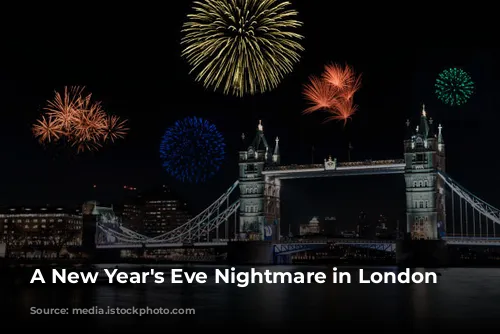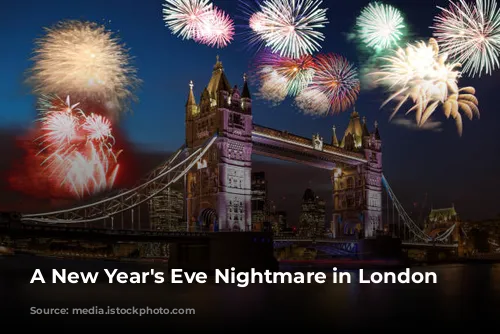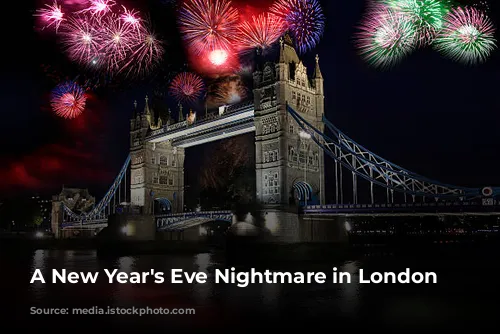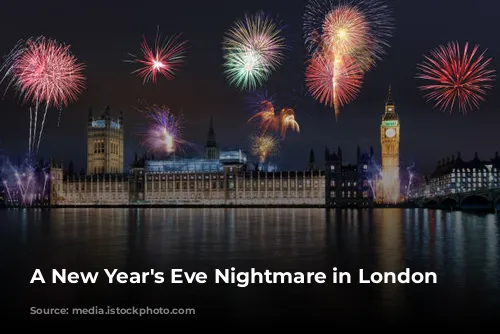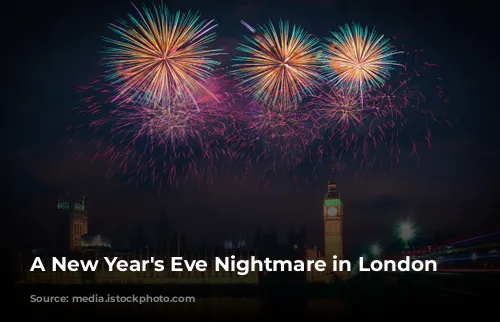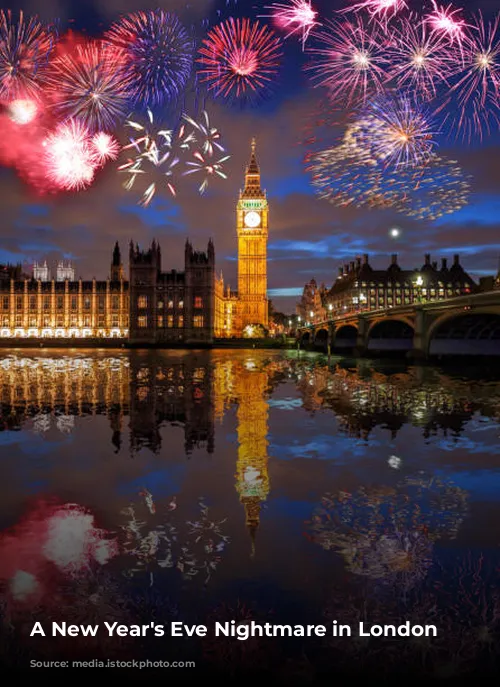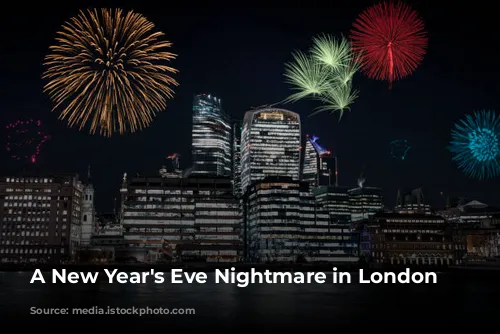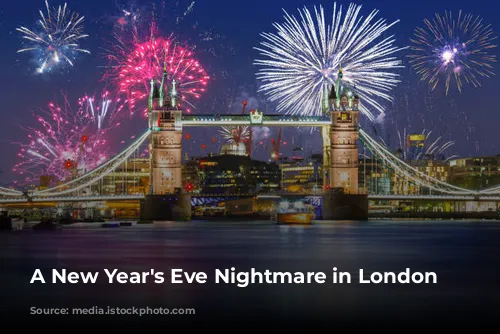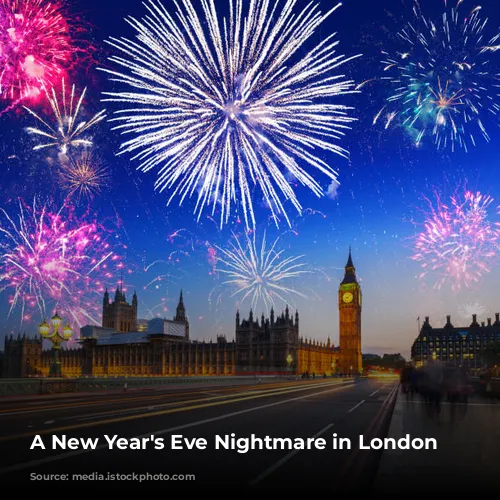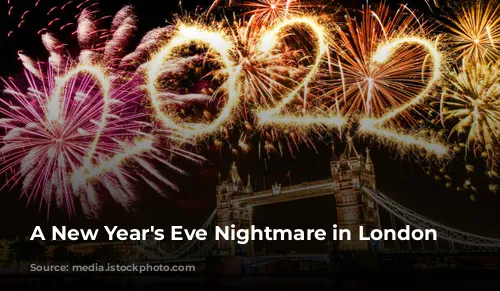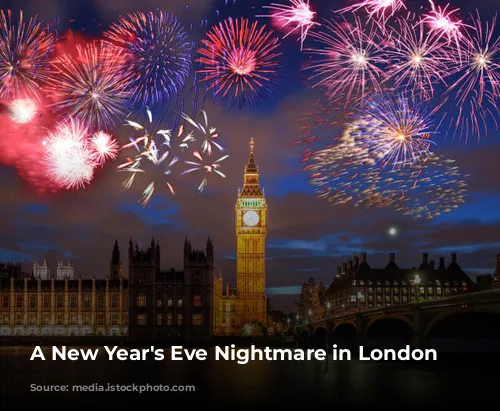A dazzling display of drone lights over Westminster, spelling out “London: a place for everyone,” captivated viewers worldwide on New Year’s Eve. The vibrant fireworks and festive atmosphere were a spectacle to behold, but the reality on the ground was far from cheerful.
Thousands of people, including myself, found themselves trapped in a chaotic and unmanaged queue, desperate to witness the fireworks on Waterloo Bridge. The “Pink 3” queue, where I stood, was a scene of utter disarray. The crowd was packed tightly together, with no clear direction or guidance from event staff. As the clock ticked closer to midnight, the atmosphere grew tense, with growing fears of a dangerous crowd crush. Thankfully, I was able to escape the pandemonium, but not before missing the fireworks altogether. The entire event was more of a stressful ordeal than a joyous celebration, and it was truly fortunate that it didn’t escalate into a tragedy like the one that occurred in Seoul just months earlier.
A Flawed Plan from the Start
Despite arriving at Holborn Tube station well in advance of the designated gate opening time, I found myself caught in a sea of disorganised queues. Reports from other attendees revealed that some had been waiting in line since 7 p.m. and still hadn’t managed to get onto the bridge. The advertised attendance of over 100,000 people should have been a clear indication that the event required meticulous planning and management.
One major contributor to the chaotic situation was the lack of clear signage and organization. There was only one sign pointing towards the Pink line and the neighboring Red 4 lines, and the surrounding area was a maze of disorganized queues. The stewards seemed clueless about the layout, leading attendees on a frustrating journey through central London before finding the correct line, which was already stagnant.

A Rush Towards Disaster
After hours of waiting, the line to Waterloo Bridge finally began to move around 11 p.m., only to find the gates closed. The people ahead of us started rushing to find any available spot to watch the fireworks. The crowd quickly surged forward, transforming into a frenzied mob scrambling over barriers and underground entrances to reach the front.
The lack of clear communication about the closed gate, combined with the growing impatience and aggression of the crowd, fueled the dangerous situation. The absence of clear announcements, signs, or additional security personnel meant that more and more people continued to rush towards the bridge, oblivious to the risks.
The presence of young children caught in the throng, vulnerable to being trampled, added another layer of concern. The entire experience felt deeply unsafe, and it was a testament to sheer luck that the situation didn’t turn fatal.
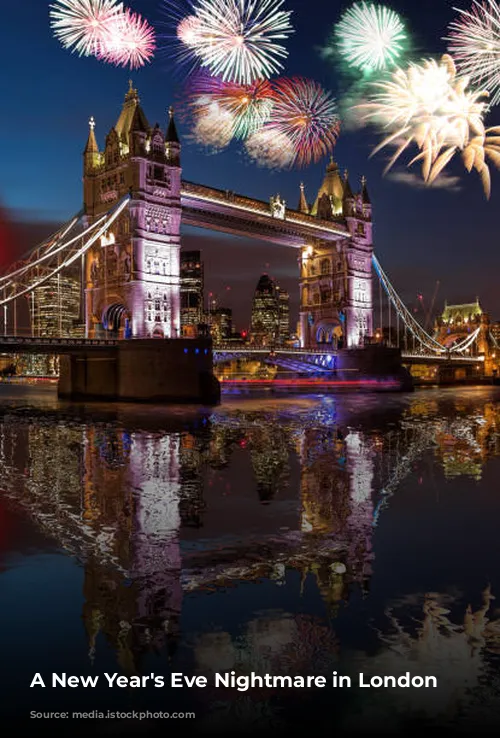
A Dismissive Response and a Flawed System
Despite widespread complaints about the chaotic event, the Mayor’s office has brushed aside concerns, claiming that the event wasn’t oversold and that the majority of attendees enjoyed the display. This dismissive response is shockingly complacent, especially in light of the near-tragic situation. The statement also attributes delays to attendees with fake tickets, which seems like a weak excuse considering the lack of organization and inadequate security measures.
The incident raises serious questions about the city’s preparedness for large-scale events. It also begs the question of what message this sends to visitors who spend considerable sums of money to experience London’s vibrant celebrations. The Mayor’s dismissive attitude is disrespectful to those who were impacted by the chaos.
The lack of refunds and the apparent lack of learning from this event are deeply concerning. Without proper action, it’s easy to imagine the same chaotic scenario repeating next year. The safety of Londoners and visitors should be a top priority, and it’s crucial to learn from this near-tragedy and implement preventative measures to avoid a similar incident in the future.
